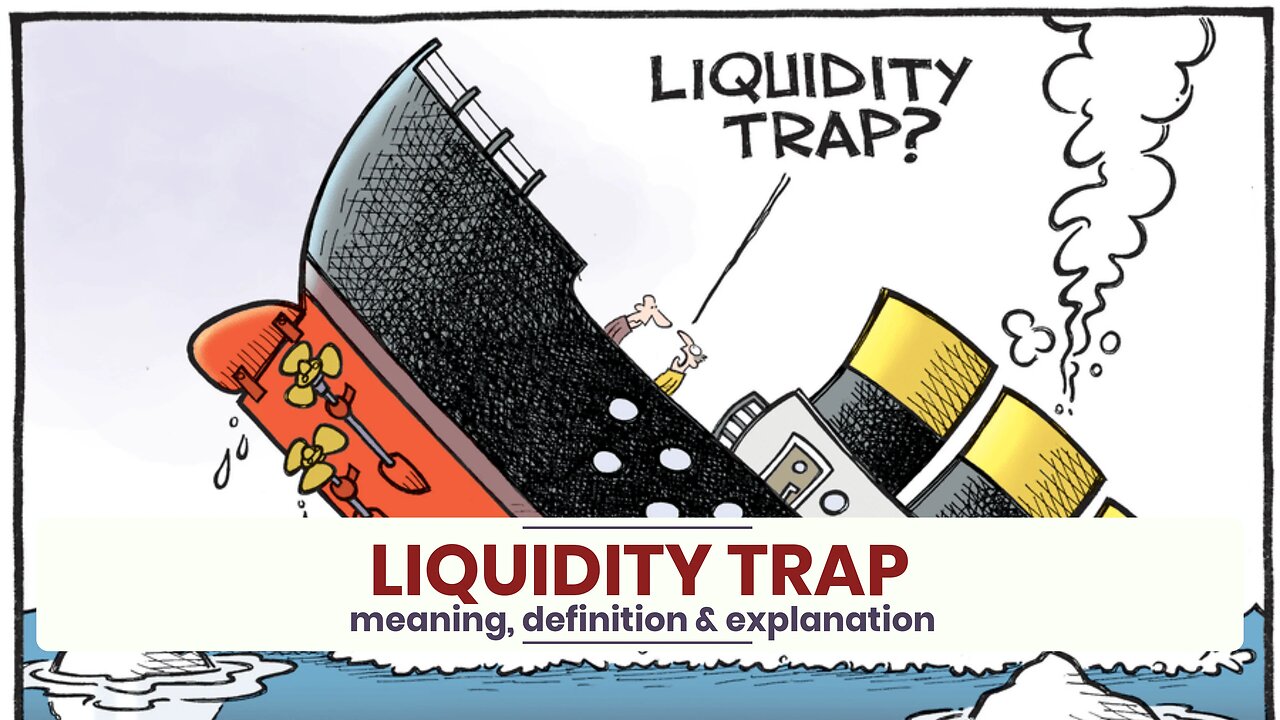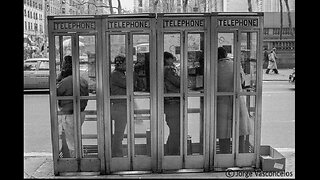Premium Only Content

What is LIQUIDITY TRAP?
✪✪✪✪✪
http://www.theaudiopedia.com
✪✪✪✪✪
What does LIQUIDITY TRAP mean? LIQUIDITY TRAP meaning - LIQUIDITY TRAP definition - LIQUIDITY TRAP explanation. What is the meaning of LIQUIDITY TRAP? What is the definition of LIQUIDITY TRAP? What does LIQUIDITY TRAP stand for? What is LIQUIDITY TRAP meaning? What is LIQUIDITY TRAP definition?
A liquidity trap is a situation, described in Keynesian Economics, in which injections of cash into the private banking system by a central bank fail to decrease interest rates and hence make monetary policy ineffective. A liquidity trap is caused when people hoard cash because they expect an adverse event such as deflation, insufficient aggregate demand, or war. Common characteristics of a liquidity trap are interest rates that are close to zero and fluctuations in the money supply that fail to translate into fluctuations in price levels.
In its original conception, a liquidity trap refers to the phenomenon when increased money supply fails to lower interest rates. Usually central banks try to lower interest rates by buying bonds with newly created cash. In a liquidity trap, bonds pay little or no interest, which makes them nearly equivalent to cash. Under the narrow version of Keynesian theory in which this arises, it is specified that monetary policy affects the economy only through its effect on interest rates. Thus, if an economy enters a liquidity trap, further increases in the money stock will fail to further lower interest rates and, therefore, fail to stimulate.
In the wake of the Keynesian revolution in the 1930s and 1940s, various neoclassical economists sought to minimize the concept of a liquidity trap by specifying conditions in which expansive monetary policy would affect the economy even if interest rates failed to decline. Don Patinkin and Lloyd Metzler specified the existence of a "Pigou effect", named after English economist Arthur Cecil Pigou, in which the stock of real money balances is an element of the aggregate demand function for goods, so that the money stock would directly affect the "investment saving" curve in an IS/LM analysis, and monetary policy would thus be able to stimulate the economy even during the existence of a liquidity trap. While many economists had serious doubts about the existence or significance of this Pigou Effect, by the 1960s academic economists gave little credence to the concept of a liquidity trap.
The neoclassical economists asserted that, even in a liquidity trap, expansive monetary policy could still stimulate the economy via the direct effects of increased money stocks on aggregate demand. This was essentially the hope of the Bank of Japan in 2001, when it embarked upon quantitative easing. Similarly it was the hope of the central banks of the United States and Europe in 2008–2009, with their foray into quantitative easing. These policy initiatives tried to stimulate the economy through methods other than the reduction of short-term interest rates.
When the Japanese economy fell into a period of prolonged stagnation despite near-zero interest rates, the concept of a liquidity trap returned to prominence. However, while Keynes's formulation of a liquidity trap refers to the existence of a horizontal demand curve for money at some positive level of interest rates, the liquidity trap invoked in the 1990s referred merely to the presence of zero interest rates (ZIRP), the assertion being that since interest rates could not fall below zero because no one will lend 100 dollars unless they get at least 100 dollars back – this is no longer true (2016) as BoJ and some Western European countries have implemented 'negative interest rates' for accounts held at central banks-, monetary policy would prove impotent in those conditions, just as it was asserted to be in a proper exposition of a liquidity trap. Given that there is no evidence of the existence of a liquidity trap for an interest rate greater than zero, in modern macroeconomics liquidity trap refers to a situation in which the nominal interest rate is zero. As a consequence of this, a liquidity trap is also known as the Zero Lower Bound Problem.
While this later conception differed from that asserted by Keynes, both views have in common, firstly, the assertion that monetary policy affects the economy only via interest rates, secondly, the conclusion that monetary policy cannot stimulate an economy in a liquidity trap, and thirdly, the inference that interest rate cannot fall below some value. Declines in monetary velocity offset injections of short-term liquidity.
-
 1:41
1:41
The Audiopedia
7 months agoWhat is PUBLIC DEBT?
53 -
 LIVE
LIVE
The Jimmy Dore Show
3 hours agoTulsi SHREDS Intel Agencies in Senate Hearing! Jon Stewart’s Anti-China Propaganda! w/Elaine Culotti
18,339 watching -
 29:28
29:28
Afshin Rattansi's Going Underground
1 day agoMax Blumenthal on US’ Ukraine Aid Corruption, 'Psychotic' Israel Turning the West Bank into Gaza
1.18K -
 LIVE
LIVE
Sarah Westall
1 hour agoUnited States in a Two Front War, Identify Military Psyops and Special Operations w/ Jeffrey Prather
287 watching -
 LIVE
LIVE
Quite Frankly
5 hours ago"Open Phones: D.C. Crash, Senate Hearings, Petty Break-Ups" 1/31/25
802 watching -
 LIVE
LIVE
2 MIKES LIVE
4 hours ago2 MIKES LIVE #173 Open Mike Friday!
323 watching -
 LIVE
LIVE
LFA TV
8 hours agoDemocrats’ Greatest Fear Is Accountability | TRUMPET DAILY 1.31.25 7pm
447 watching -
 23:15
23:15
Bare Knuckle Fighting Championship
1 day agoBKFC FIGHT NIGHT MOHEGAN SUN FREE FIGHTS
6.88K1 -
 5:49:46
5:49:46
Bitfinex
7 hours agoBitfinex Talks Live at PlanB El Salvador - Day 2
11.7K1 -
 41:47
41:47
Candace Show Podcast
4 hours agoBecoming Brigitte: An Introduction
96.7K116